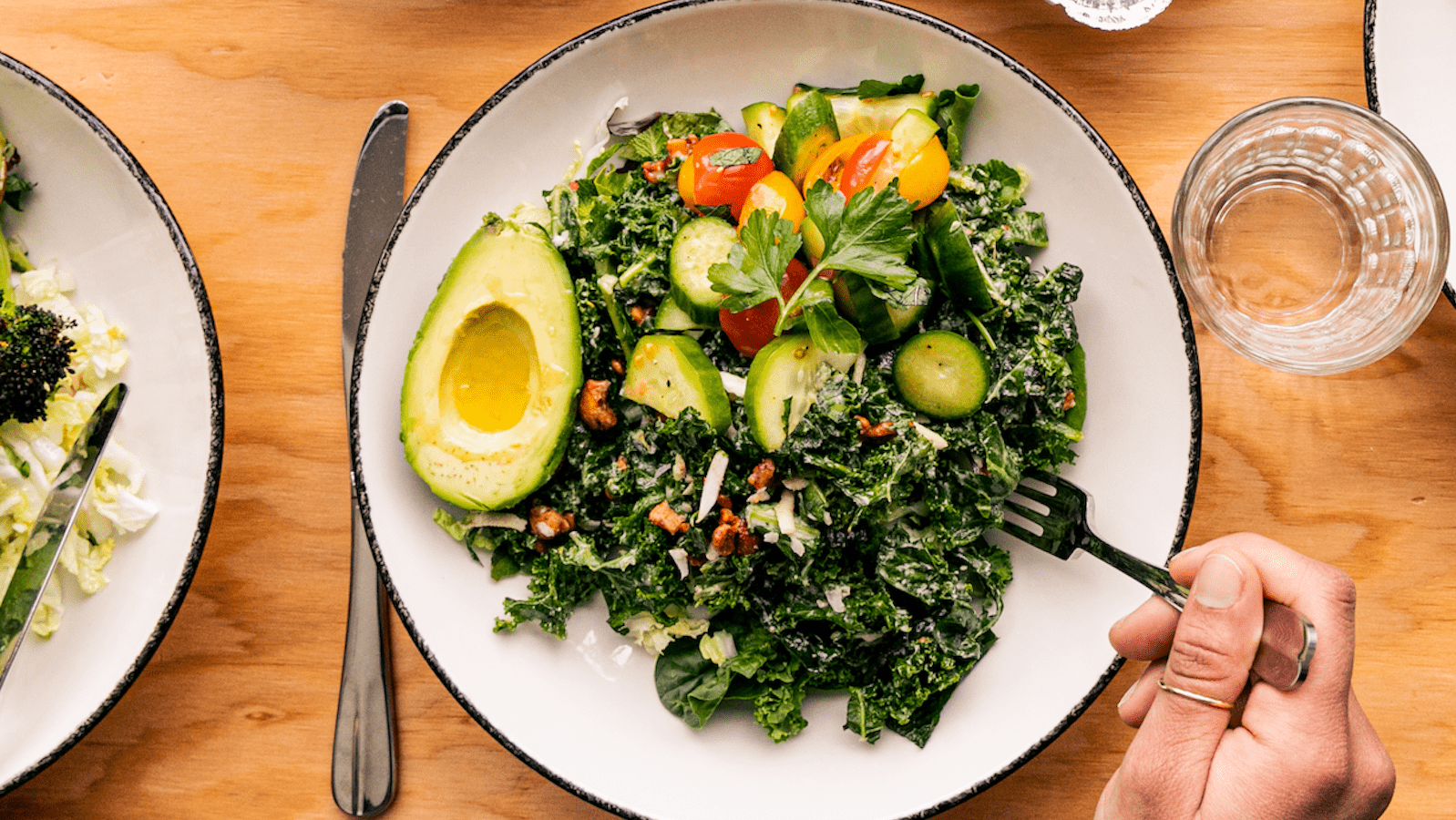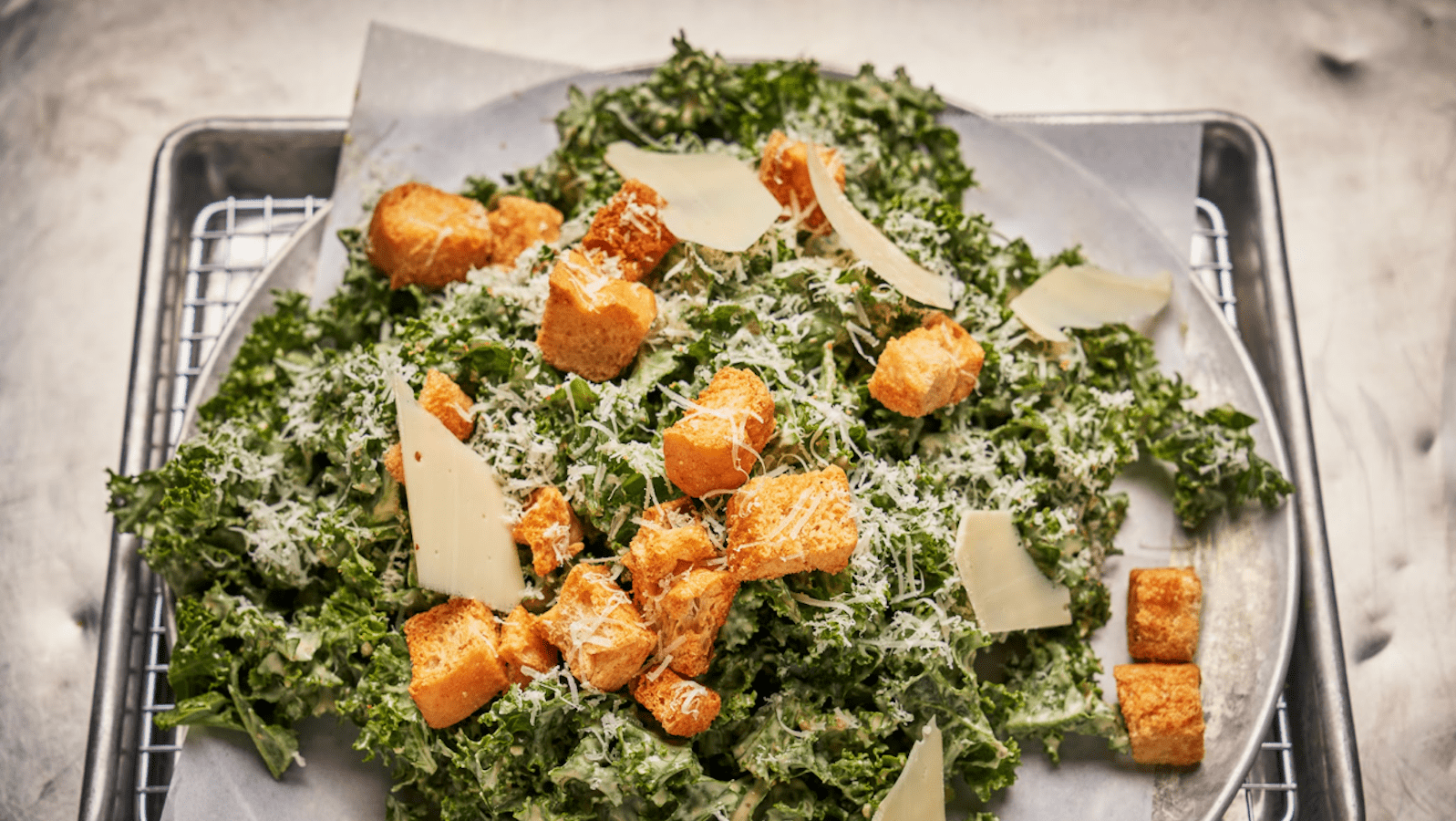Every Fourth of July, Americans fire up the grill and gather to watch fireworks in celebration of the nation’s birthday, the anniversary of the signing of the Declaration of Independence. But unbeknownst to many, the day is something of a dual holiday — because July 4 also marks the anniversary of the creation of the illustrious Caesar salad, a mouthwatering dish that splits the difference between side salad and main course, where romaine lettuce, croutons, Parmesan cheese, and of course, Caesar dressing come together in briny, creamy harmony.
Accounts of the salad’s birthplace and origin story vary, but a few key details tend to remain the same: The dish was created in Tijuana, Baja California, by the Italian immigrant chef Caesar Cardini, when a group of Americans looking to escape Prohibition-era rules walked into his restaurant, Caesar’s Place. On a whim, Cardini put together a salad using odds and ends from around the kitchen: an egg, garlic, lemon, Parmesan cheese, whole romaine lettuce leaves. It is largely agreed that the Caesar was born on or around July 4, 1924 — 100 years ago. By bringing together a number of culinary influences and appetites, the Caesar salad reflects the multiculturalism of the U.S.-Mexico borderland and the ingenuity of immigrant kitchens; perhaps because of this, it has now loomed large in the American cultural imagination for a century.
But for some eaters with dietary restrictions — such as vegans and those who can’t tolerate dairy — the anchovies, raw egg yolk (or mayonnaise as a shortcut), and mountains of grated cheese that define the Caesar salad pose a conundrum. And while both small, tinned fish and eggs have a relatively low environmental impact, the carbon footprint of Parmesan cheese may trouble those who strive to eat a planet-friendly diet. The U.S. retail market for plant-based substitutes for animal foods grew from $3.9 billion to $8.1 billion between 2017 and 2023, a period during which Americans’ alarm over climate change reached all-time highs.
In response to this demand, restaurant chefs have been developing vegan Caesar salads. Drawing on myriad secret ingredients — tahini, cashews, coconut aminos — they’re aiming to replicate the flavor profile of a Caesar without animal products.
“It’s my favorite salad, it’s a lot of people’s favorite salad,” said Odie O’Connor, who has worked in restaurants for about 20 years and been vegan for almost 10 years.
When O’Connor started making and selling vegan pizzas in Portland, Oregon, he knew he had to have a Caesar salad on the menu. The chef has worked in pop-ups and currently runs a brick-and-mortar shop called Boxcar Pizza that focuses on Detroit-style pies. In the restaurant’s early days, O’Connor was buying and using a store-bought vegan dressing. Then he decided to make his own in-house.
“When I’m looking to veganize something that is notoriously non-vegan, I’m just like, break it down: What is its flavor profile?” said O’Connor. “To me, that would be garlicky, kinda smoky, very salty, lemony.” Caesar salad also has a distinct umami flavor that comes from the use of anchovies, egg yolk or mayo, and Parmesan. Discovered by Japanese scientist Kikunae Ikeda in 1908, umami refers to a rich savoriness that stems primarily from the presence of the amino acid glutamate. It is considered to be a fifth taste, along with salty, sweet, sour, and bitter.
To replicate these flavors, O’Connor relied heavily on pantry staples: The garlic and lemon in the original Caesar dressing stayed, as they are already vegan; to them, he added salt, pepper and Dijon mustard, and used tahini, a sesame seed paste, as the base of the salad dressing. For Parmesan cheese, he substituted nutritional yeast. And to emulate the subtle zip that Caesar salad is known for, O’Connor uses a hefty amount of capers and their brine.
“We try to be super intentional and put in the effort into each ingredient,” said O’Connor, who credits his own veganism to a desire to eat sustainably. Boxcar is first and foremost a pizza restaurant, but O’Connor says it sells “a huge amount” of Caesar salad. For those with dietary restrictions, he says, “I think people look forward to being able to still enjoy things they’ve always enjoyed but that due to their diet” aren’t always accessible to them.
However, in a testament to the persuasiveness of animal-free Caesar recipes, even some restaurants that serve meat have veganized their Caesar salads.
One of them is Scarr’s Pizza in New York City. The recipe was developed nearly 10 years ago by Gerardo Lalo Gonzalez, who says Scarr’s owner, Scarr Pimentel, specifically requested a vegan Caesar for the menu. For his recipe, Gonzalez used cashews as a base and focused on how to replicate the flavor that anchovies bring to the traditional Caesar. However, he declined to share exactly what else goes into his dressing — although he hinted that seaweed may play a role. “Normally I’m very, very open with my recipes,” said Gonzalez. But Gonzalez promised Pimentel that the specifics of his recipe would be a secret. (Scarr’s did not respond to a request for comment before publication of this story.) The final recipe is “something I’m really proud of,” said Gonzalez, who now lives and freelances in California, says he still hears from Scarr’s customers all the time when they find out the salad is his creation.
“Caesar salad is like, universally everyone’s favorite salad,” he said. “It’s just refreshing and satisfying. I mean, when you break it down, it’s the dressing itself” that makes the salad shine. “It’s almost like a dip. It’s really just like eating a crudité.”
Dig, an East Coast-based fast-casual chain, is another franchise that serves animal products but has opted for a vegan Caesar. Experimentation played a huge role in the recipe’s development, according to chef Matt Weingarten, who wanted to avoid polarizing ingredients and common allergens. “We tried, I mean, I think it was six months,” said Weingarten, who is the culinary director at Dig. “We really, really workshopped this.”

The final recipe uses cashews to replicate the rich mouthfeel that egg yolk or mayo brings to a traditional Caesar salad dressing. “The best way to understand how that decision was made is that one of the great qualities of Caesar — there’s lots of great qualities, it’s the garlickiness, it’s the sort of funkiness, it’s the brightness,” said Weingarten. “But it’s really that fat mouthfeel” that defines a Caesar, he said. The chef found early on that soaking and pureeing roasted cashews helped mimic that texture.
Their recipe also leans on coconut aminos, a common substitute for soy sauce, to bring a certain funkiness to the dish. The salad’s cheese factor comes from an “amalgamation” of the salad dressing ingredients, rather than from a 1-to-1 substitute. (Weingarten says he’s “not convinced” nutritional yeast tastes quite like Parmesan cheese.)
Originally developed around 2015, the chain’s vegan Caesar salad began as a seasonal item, to be rotated into the menu only for a select period of time. But the recipe was almost instantly a hit. “Really, once we put it on the menu, it hasn’t come off,” said Weingarten. Rather than replacing or sitting next to a traditional Caesar on the menu, the vegan Caesar at Dig has come to stand on its own.
Eating vegan is not, of course, the same as being zero-impact, especially when one’s definition of “impact” looks at more than just carbon emissions. Reports have shown, for example, that the production of cashews is “brutal” and highly exploitative of workers. And farmworkers in the U.S., many of them migrants, often endure dangerous working conditions for very low wages. Meanwhile, cows and hens raised for food in large-scale agriculture facilities often experience deplorable conditions.
Trying to make ethical food choices as a consumer can be vexing, but the journey toward a more sustainable diet can be rewarding — even thrilling. While Gonzalez is not “wholly plant-based” himself, he says the pursuit of cooking without using animal products scratches an itch creatively and professionally. “I’ve always been drawn to plant-based cooking because I think from a flavor point of view it’s a lot more interesting than relying solely on animal product,” he said. After developing the vegan Caesar for Scarr’s, Gonzalez says, “I was really emboldened. I was like, ‘I’m gonna make a vegan blue cheese.’”


